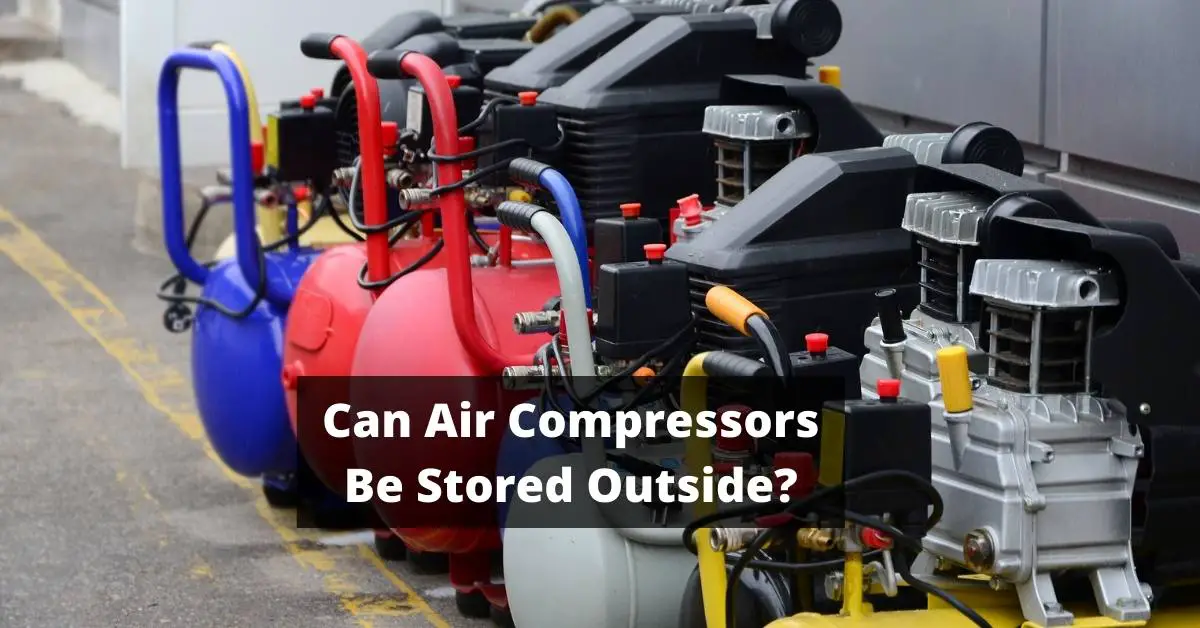Hey there, fellow DIY enthusiasts! Today, I’m going to show you how to turn on your Speedaire air compressor. As someone who enjoys working on home improvement projects and tinkering with tools, having a reliable air compressor is essential.
However, if you’re new to using an air compressor or just got yourself a Speedaire model, it can be intimidating trying to figure out how to get started.
Don’t worry; I’ve got you covered. In this article, I’ll walk you through the steps involved in turning on your Speedaire air compressor so that you can start tackling your next project with confidence.
From familiarizing yourself with the components to adjusting the pressure and shutting down the machine properly, I’ll provide detailed instructions that will make this process easy-peasy for even the most novice tool user.
So let’s dive in!
Familiarize Yourself with the Components
Familiarize yourself with the components of your machine so you can easily operate it. The Speedaire air compressor is made up of several components, including the tank, pressure switch, regulator valve, and safety valve.
The tank is where compressed air is stored and comes in various sizes depending on how much air you need for your project. The pressure switch controls when the compressor turns on and off based on the desired pressure level. It is connected to the regulator valve which controls the amount of pressure that comes out of the compressor. Finally, there’s a safety valve that releases excess pressure if it surpasses a certain point.
It’s important to familiarize yourself with these different parts before attempting to turn on your air compressor. Knowing what each component does will help you troubleshoot any issues that may arise during operation.
With this knowledge in mind, let’s move onto preparing your work area by ensuring it’s well-ventilated and free from clutter or debris that could cause hazards while operating your machine.
Prepare Your Work Area
Before you start, make sure your workspace is clean and organized for optimum efficiency, just like a chef preparing ingredients before cooking. Remove any debris or clutter that may interfere with the air compressor’s operation. If possible, designate a specific area solely for the compressor to avoid accidents caused by tripping over cords or hoses.
Make sure there aren’t any flammable materials in the vicinity of your work area. The heat generated by an air compressor can be dangerous if it comes into contact with gasoline, oil, or solvents. Also, make sure the air intake is free from dust and other particles that could damage the machine. Use an air filter if necessary.
Lastly, check the power source to which you’ll connect your air compressor. Make sure it matches the voltage required by your machine and that it has enough amps to handle its startup current draw. A dedicated circuit breaker is recommended to avoid overloading circuits that also power other equipment.
With these steps complete, you’re now ready to connect your air tools and begin using your Speedaire Air Compressor!
Connect Your Air Tools
Now it’s time to hook up your trusty air tools and get to work! Before connecting your tools, make sure that you have the correct couplers and connectors. These come in various sizes, so make sure they match the size of your air compressor’s outlet.
To connect your air tool, simply slide the appropriate connector onto the end of the hose and push it firmly onto the tool’s inlet. You’ll hear a click once it’s securely locked into place. If you’re using multiple tools, consider investing in a manifold, which lets you connect several hoses at once.
Remember to always use teflon tape on any threaded connections to prevent leaks. And if you’re unsure about anything, consult with an expert or refer to the user manual.
With all your tools connected and ready for action, let’s move on to turning on the power. First things first – make sure all knobs are turned off before plugging in the compressor. Then plug it into a grounded power outlet and turn it on by switching the knob from ‘off’ to ‘on’. Listen for any strange noises or vibrations that could indicate an issue with your equipment before beginning work.
Turn on the Power
You’re ready to power up your equipment and get to work, but make sure to check for any unusual sounds or vibrations before starting. Once you’ve made sure everything is in order, locate the on/off switch and turn it on.
You’ll hear the compressor start running as it builds pressure in the tank. It’s important to monitor the pressure gauge while the compressor is running. As it reaches its maximum capacity, you’ll notice a drop in RPMs and eventually the compressor will shut off automatically.
If you need more air pressure than what’s currently available, allow the compressor to fully recharge before adjusting the pressure. Now that you’ve turned on your Speedaire air compressor and ensured proper function, it’s time to adjust the pressure.
This can be done by turning the regulator knob until you reach your desired PSI level. Remember, over-pressurizing your tools can damage them and lead to safety hazards, so always use caution when adjusting pressure levels.
Adjust the Pressure
It’s time to get your tools running at their optimal level by adjusting the pressure with ease. To do this, locate the pressure adjustment knob on the Speedaire air compressor. This knob is usually located near the pressure gauge and can be easily turned clockwise or counterclockwise to adjust the pressure.
Before you start adjusting the pressure, make sure that you have a clear understanding of what pressure your tools require. Over-pressurizing your tools can cause damage and may even lead to safety hazards.
Once you know what pressure is required, turn on the compressor and wait for it to build up to its maximum PSI rating.
Now it’s time to adjust the pressure! Slowly turn the knob until you reach your desired PSI setting. Keep an eye on the gauge as you do this so that you don’t over- or under-pressure your tools.
Once you’ve adjusted the pressure, give it a few minutes to stabilize before using your tools. And remember, always wear appropriate safety gear when working with compressed air equipment.
To shut down the compressor, simply turn off all power sources and allow it to cool down before storing it away.
Proper maintenance of your Speedaire air compressor will ensure that it lasts for years and provides reliable performance every time you use it.
Shut Down the Compressor
When it’s time to wrap up your project, make sure you give your tools and equipment a break by properly shutting down the system. To begin shutting down your Speedaire air compressor, turn off the power switch or unplug the unit from its electrical source.
Next, twist the pressure regulator knob in a counterclockwise direction until it stops rotating. This will allow all of the compressed air inside of the tank to be released.
Once all of the air has been released, turn off any remaining valves or disconnect hoses that are still attached to the compressor. Take care when handling these components as they may still have residual pressure trapped inside them.
Lastly, inspect and clean any filters or other components that may need maintenance before storing your compressor away for future use.
By following these simple steps for properly shutting down your Speedaire air compressor after each use, you can help prolong its lifespan and ensure that it is always ready for action when you need it most. In addition, regularly performing routine maintenance tasks such as cleaning filters and replacing worn parts can help keep your compressor running smoothly over time. So, remember to take good care of your equipment and it will take good care of you!
Maintenance Tips
Proper maintenance of your equipment is essential to ensure its longevity and optimal performance. Whether you’re using your Speedaire air compressor for industrial or personal use, it’s important to take good care of it.
One of the most important things you can do for your machine is perform regular cleaning and oiling. This will help to prevent dirt and debris from building up inside the compressor, which can cause damage over time.
Another important aspect of maintaining your Speedaire air compressor is checking its filters regularly. The filter is responsible for trapping dirt and dust particles that could potentially harm the machine’s inner workings. If this component becomes clogged, it can reduce airflow and put additional strain on your compressor’s motor. To avoid this problem, make sure to check the filter every few weeks and replace it when necessary.
Finally, make sure that you pay attention to any unusual sounds or vibrations coming from your Speedaire air compressor as these may be signs that something is wrong with the machine. Ignoring these warning signs could lead to more serious problems down the road, so it’s always best to address them as soon as possible.
Remember, taking good care of your equipment now will save you both time and money in the long run!
Conclusion
To conclude, turning on a Speedaire air compressor isn’t a difficult task. By following the steps outlined in this article, you can safely and effectively operate your compressor.
Firstly, it’s essential to familiarize yourself with the components of your compressor and prepare your work area. Properly connecting your air tools and turning on the power are crucial steps in starting up your compressor.
Additionally, adjusting the pressure to meet your specific needs is crucial for optimal performance. Furthermore, regular maintenance of your Speedaire air compressor will ensure its longevity and prevent any potential issues from arising.
Remember to check the oil levels regularly and clean or replace any filters as needed. With these tips in mind, you can confidently utilize your Speedaire air compressor for all of your pneumatic tool needs.


